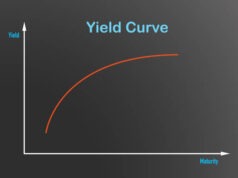
In today’s digital world, the internet has become an integral part of our lives. And, like other popular things from previous eras, this era heralds the arrival of social media. Social media is impacting many aspects of our lives, including our buying habits. What we see on social media and what is promoted by social media celebrities known as “influencers” makes us want to try it for ourselves.
This article delves into social media’s profound influence on consumerism, investigating the impact of online advertising, the rise of influencer marketing, and the pressure to engage in conspicuous consumption. Understanding these factors will help you better understand the dynamic relationship that exists between consumerism and social media.
The Power of Online Advertising
Advertisements are everywhere; it’s difficult to think of a place where you aren’t being advertised to. However, as advertisements have become so prevalent, people have become wise enough to not pay attention to every advertisement they see and to tune out the irrelevant ones. This is where social media comes into play.
You mostly ignore Burger King Billboards on your way to work because those advertisements are irrelevant to you at the moment. However, when you are hungry, your behavior changes and the advertisement appears relevant now. Online marketing works because it shows you items that you may already somehow want to buy or those that are according to your taste or needs.
Think about the last time you Googled something, say, low-rise jeans, and the next thing you know, your Facebook page is flooded with advertisements for brands selling the coolest low-rise jeans at a reasonable price. You might even make a purchase from one of them. That is the power of personalized marketing and online advertising.
The Rise of Influencer Marketing
This is the age of influencers; everyone wants to be one, and everyone appears to be following them. That is why they are known as “influencers”; they have the ability to influence our actions. This includes our buying behaviors. When you see one of your favorite influencers using a certain face product or a certain brand of coffee (possibly their own!), you feel compelled to give it a try. This is how influencer marketing works.
Brands have realized that people are more interested in emotional advertisements and require personalized branding. And because everyone follows influencers, brands are using them as bait for their target customers; for better target marketing, they hire influencers to market their products.
The Pressure of Conspicuous Consumption
If you’ve been attentive enough, you may have noticed that a lot of what you see on social media sites like Instagram is actually people flaunting their wealth or status. They are demonstrating how luxurious their lifestyles are and how much they enjoy spending money on trips, luxury shopping, and dining out. This makes people more conscious of how they appear, and this is where conspicuous consumption begins.
Conspicuous consumption refers to the use of things to demonstrate wealth or to appear expensive to other members of a person’s class. Have you noticed the “old money” social media trend? It has recently gained popularity, with people purchasing luxury items in order to appear “expensive.” And because people are more interested in taking pictures and showing off than in actually enjoying the moment, it opens the door to more consumerism.
The Impact on Consumer Behavior
The generation is being pushed to become a puppet of consumerism by all the influencer marketing, people bragging about their wealth and the shallow and materialistic nature of society. People are constantly searching for more to appear more stylish, luxurious, prosperous, and happy. As a result, people’s purchasing habits become excessively materialistic.
Trends keep changing on social media and its constant exposure creates the pressure of keeping up with every new trend as that’s what is perceived as the standard of success and happiness. The fear of missing out (FOMO) and the desire for social validation drive consumers to engage in excessive materialism. As a result, consumer debt increases, and the quest for happiness becomes increasingly tied to materialistic pursuits.
Speaking of all the social media and online craze, you don’t have to spend a lot of money to stay updated on what’s happening around you. With Windstream internet plans, you get superfast speeds and constant connectivity without breaking the bank. Windstream Internet allows you to stay up to date with the current trends so you always know which ones to follow and avoid. This is a trend you can rely on!
Conclusion
Consumerism and social media have formed a powerful alliance that has had a significant impact on consumer behavior. Online ads take advantage of social media platforms’ personalization capabilities, fueling a culture of continuous consumption. Influencer marketing uses individuals’ trust to influence consumer purchasing behavior.
Understanding all these dynamics is essential for making informed consumer choices and fostering a healthier relationship with social media. Influencers, on the other hand, must use their power of influence to motivate people to make better consumer decisions. Finally, finding an equilibrium between the benefits of social media connectivity and the pitfalls of consumerism is essential for navigating the modern world.


































